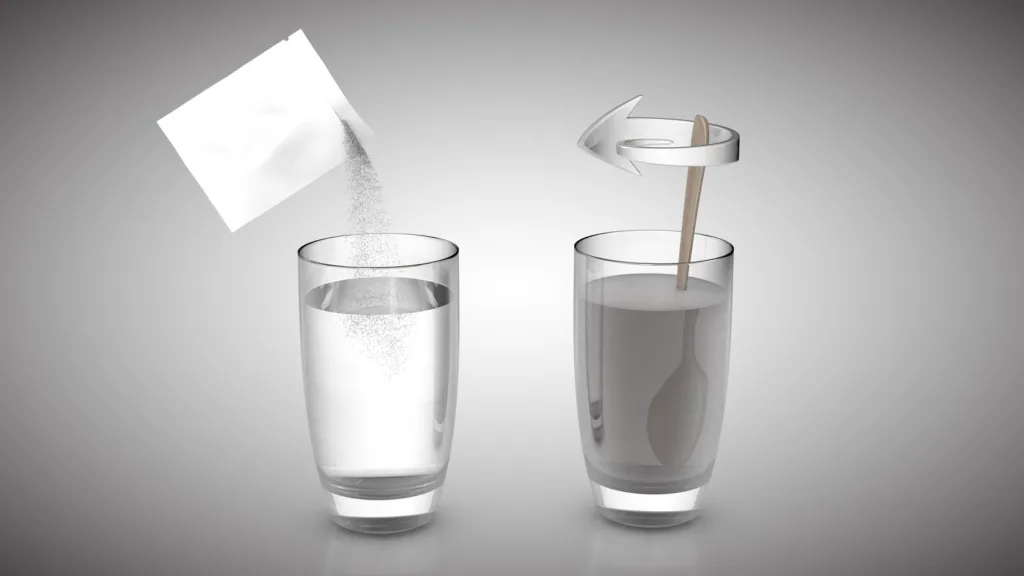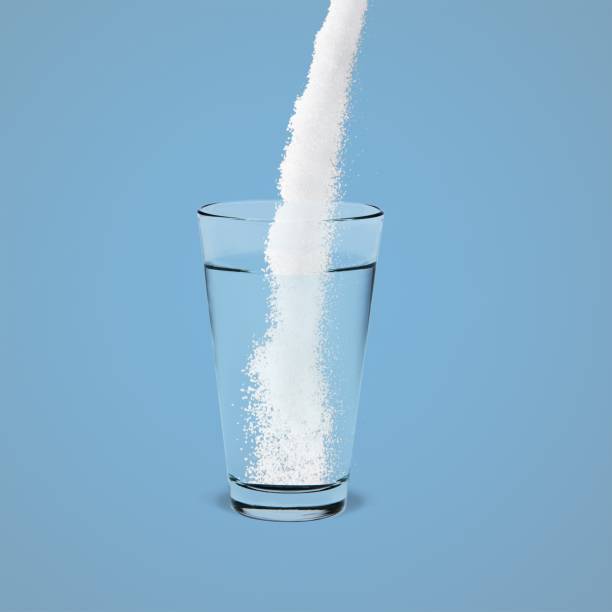Dissolving sugar in water is a common process that many people do not think much about. However, the process of dissolving sugar in water is a fascinating topic that deserves attention. In this article, we will explore the science behind dissolving sugar in water and answer the question of whether dissolving sugar is a chemical change.
Dissolving sugar in water is a physical change. This means that no new substance is formed during the process. When sugar is added to water, the sugar molecules spread evenly throughout the water molecules. This is because sugar molecules are polar and can interact with water molecules, which are also polar. As a result, the sugar molecules are surrounded by water molecules, and the sugar dissolves into the water.
The process of dissolving sugar in water is reversible. This means that if we remove the water from the sugar solution, we can recover the sugar in its original form. To do this, we can evaporate the water from the sugar solution, and the sugar crystals will be left behind.
The dissolving of sugar in water is an example of a physical change because the sugar molecules do not change during the process. The sugar molecules retain their chemical properties, and no new substance is formed. This is in contrast to a chemical change, where new substances are formed, and the chemical properties of the original substance are altered.
The process of dissolving sugar in water is a physical change. During this process, no new substance is formed, and the chemical properties of the sugar molecules remain unchanged. The process is reversible, and the sugar can be recovered in its original form by evaporating the water from the sugar solution. Understanding the science behind the dissolving of sugar in water can help us apprecite the complexities of the world around us.
The Physical Nature of Dissolving Sugar
The process of dissolving sugar in water is a physical change. In this process, sugar molecules are dispersed evenly throughout the water molecules, resulting in a homogeneous mixture called a solution.
A physical change is defined as a change in the physical properties of a substance, without altering its chemical composition. In the case of dissolving sugar in water, the sugar molecules retain thir chemical identity and do not react with water molecules to form a new substance. Therefore, dissolving sugar in water is a physical change.
Moreover, this process is reversible, meaning that the sugar and water can be extracted from the solution by the process of crystallization followed by evaporation. The sugar molecules in the solution are not chemically bonded to the water molecules, allowing them to be separated from the solution through physical means.
It is important to note that the dissolving of sugar in water does not involve any chemical reaction or change in composition of the substances involved. Rather, it is a physical change that alters the physical properties of the sugar and water, resulting in a homogeneous mixture.
To summarize, the dissolving of sugar in water is a physical change because it does not alter the chemical composition of the substances involved and it is a reversible process.

Is Dissolving a Chemical Change?
Dissolving is a process of mixing solutes (substances that dissolve) in a solvent (a substance that dissolves). The solute particles become evenly distributed in the solvent due to the molecular movement that occurs. The process of dissolving is not a chemical change itself, but rather a physical change. This is because the molecules of the solute and solvent remain unchanged duing the process.
However, it is important to note that dissolving is often accompanied by an energy change. For example, in the case of instant coffee dissolving in water, the process releases heat. This is because the interaction between the solute and solvent releases energy. This energy change can make the process of dissolving seem like a chemical change, but it is still a physical change.
It is also possible to recover the original components of a solution by physical means, such as through evaporation or filtration. This further supports the idea that dissolving is a physical change rather than a chemical change.
While the process of dissolving is not a chemical change, it is often accompanied by an energy change and can appear to be a chemical change. Dissolving is a physical change that can be reversed through physical means.
Is Dissolving Sugar a Chemical Reaction?
Dissolving a spoonful of sugar in water is not a chemical reaction, but a physical change. When sugar is added to water, it dissolves and becomes evenly distributed throughout the water. The sugar molecules stay intact and do not undergo any chemical change. Therefore, no new substance is formed during the process of dissolving sugar in water.
A physical change is a change that does not involve a change in the chemical composition of the substance. In the case of dissolving sugar in water, the sugar molecules remain the same, but their arrangement changes as they bcome dispersed throughout the water.
The process of dissolving sugar in water is reversible. If the water is evaporated, the sugar will reappear as crystals. This further confirms that the process of dissolving sugar in water is a physical change, not a chemical reaction.
To summarize, dissolving sugar in water is a physical change, not a chemical reaction. The sugar molecules remain intact and do not undergo any chemical change during the process of dissolving.
Is Dissolving a Physical or Chemical Change?
Dissolving a solid in a liquid is a physical change as it only involves a change in the physical state of the matter. It does not result in the formation of any new substance. When a solid is added to a liquid, the particles of the solid disperse throughout the liquid, resulting in a homogeneous mixture. This process is known as dissolution or solvation.
Physical changes are generally reversible, and the original substance can often be recovered by reversing the process. In the case of dissolving a solid in a liquid, the original solid can be recovered by evaporating the liquid to dryness, wich will leave behind the solid.
Chemical changes, on the other hand, involve the formation of new substances with different chemical properties. Chemical changes are not reversible by ordinary physical means. Some examples of chemical changes include burning of wood, rusting of iron, and digestion of food.
It is important to note that although dissolving a solid in a liquid is a physical change, it may be a precursor to a chemical change. For example, when sugar is dissolved in water, it still retains its chemical identity. However, if the solution is heated, the sugar molecules will break down into simpler molecules, resulting in a chemical change.
Dissolving a solid in a liquid is a physical change as it only involves a change in the physical state of the matter and does not result in the formation of any new substance.

Conclusion
The process of dissolving sugar in water is a physical change that involves the breaking down of sugar crystals into smaller particles and their dispersion in water. This process does not result in the formation of a new substance and can be easily reversed by evaporating the water and recovering the sugar crystals. It is important to note that dissolving is a dfferent process than a chemical reaction, as no new substances are formed during the process. Understanding the difference between physical and chemical changes is essential in various fields, including chemistry, physics, and biology. the dissolution of sugar in water is a fundamental concept that plays a significant role in our daily lives, from cooking to making beverages, and its understanding is crucial to many scientific and practical applications.
